About the Exhibition
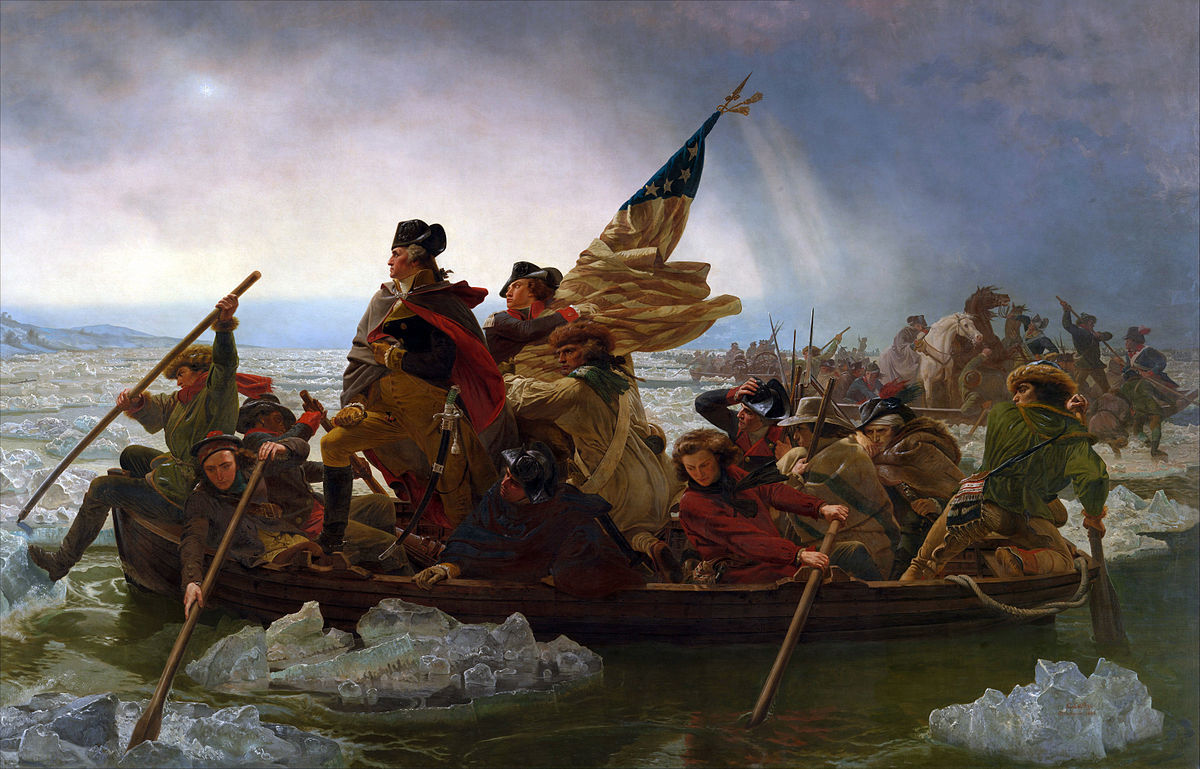
George Washington Crossing the Delaware, 1851, Emanuel Leutze
This painting by Emanuel Leutze, done in 1851, is an example of a history painting. George Washington is depicted as the hero of this turning point in the American Revolutionary War but Leutze takes liberty with the details: The Stars and Stripes flag was not used until 1777. Robert Colescott uses this painting as a starting point to center history on Black Americans in his painting, George Washington Carver Crossing the Delaware.
Learn more about George Washington Carver Crossing the Delaware
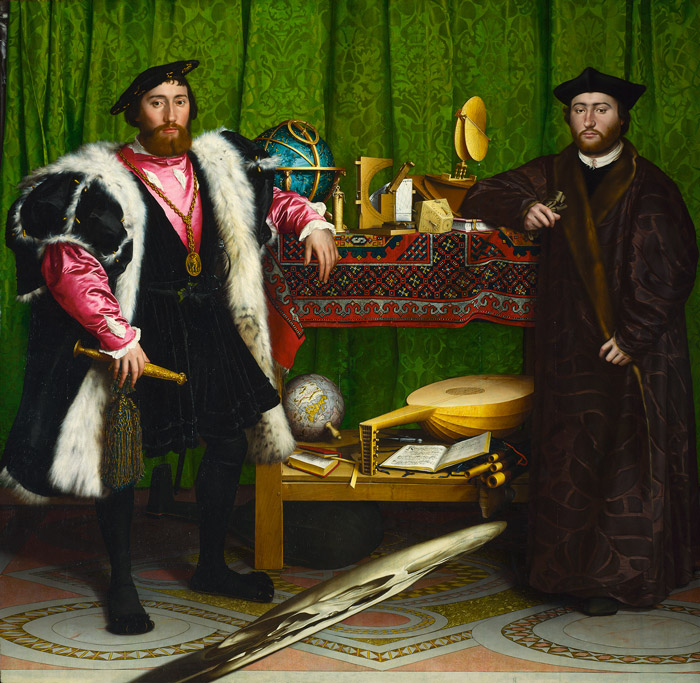
The Ambassadors, 1533, Hans Holbein
A famous example of art historical painting, Hans Holbein the Younger’s double portrait, The Ambassadors, shows two friends amidst an array of detailed artifacts from art and science. Within this celebration of human accomplishment, hiding in plain sight, is a distorted skull—a memento mori, a reminder of the inevitability of death. Kerry James Marshall replaces this skull, with a Disney-esque image of a young blonde woman in his painting, School of Beauty, School of Culture.
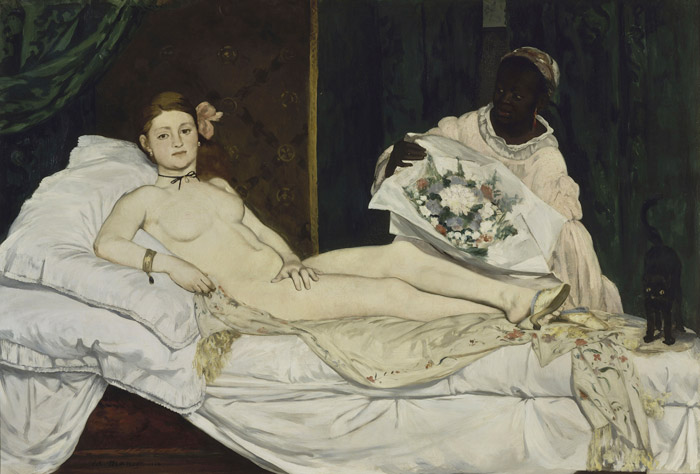
Olympia, 1832–1883, Edouard Manet
The pose of Mickalene Thomas’ figure in Tamika sur une chaise longue avec Monet references the common image of the odalisque throughout art history. Odalisque translates to female slave or a woman slave in a harem. Male artists have depicted women as passive, sexualized objects for centuries. Thomas turns that history on its head by depicting women as empowered and in control.
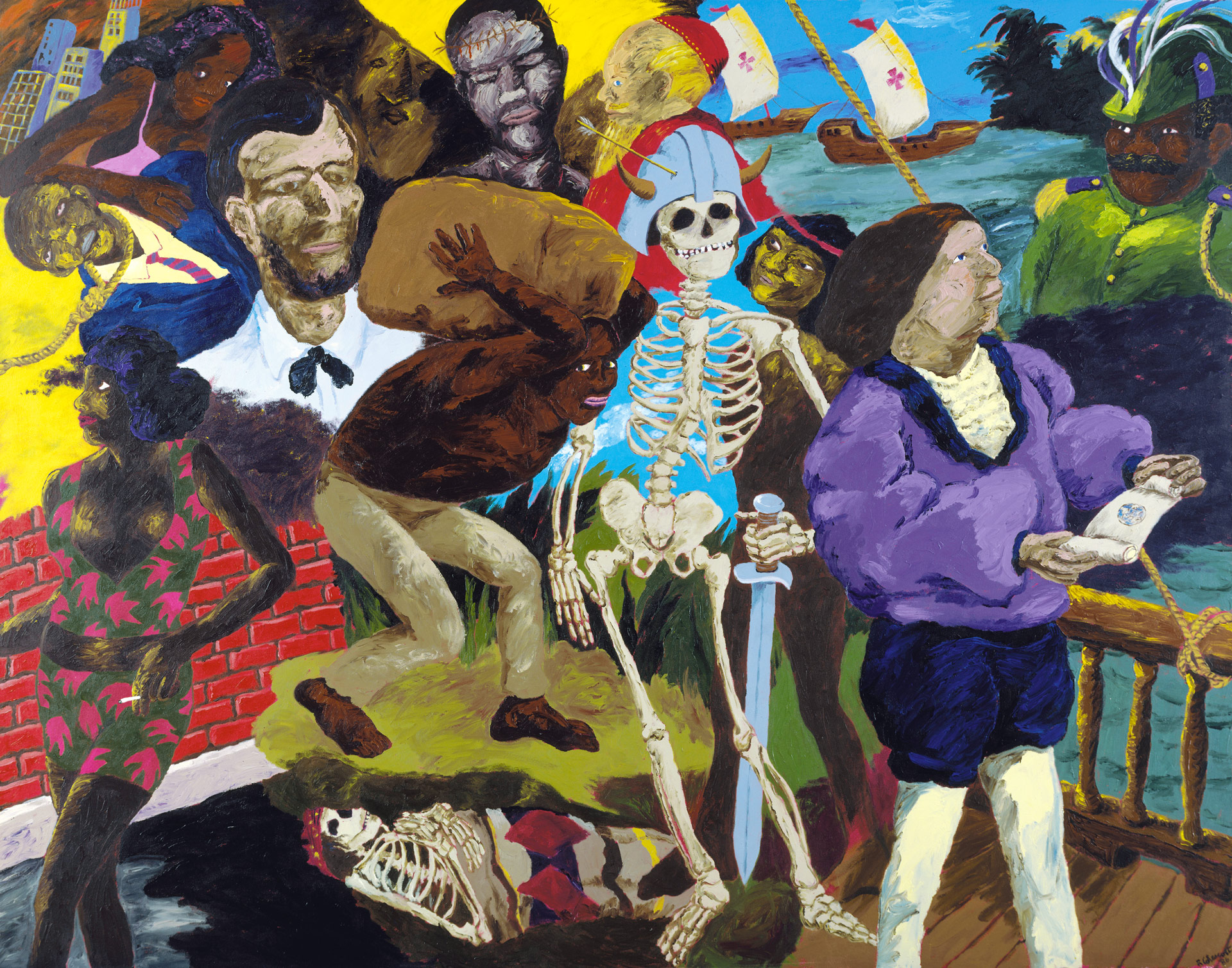
Knowledge of the Past is the Key to the Future: Some Afterthoughts on Discovery, 1986, Robert Colescott
Knowledge of the Past is the Key to the Future is a series of paintings about the politics of representation. The title refers to Marcus Garvey: "A people without the knowledge of their past history, origin and culture is like a tree without roots." These are tightly packed compositions that ponder the history and legacy of slavery and colonialism and weave together the past and present.
Learn more about Knowledge of the Past is the Key to the Future: Some Afterthoughts on Discovery

George Washington Carver Crossing the Delaware: Page from an American History Textbook (detail), 1975, Robert Colescott.
The heroic figures of Emanuel Leutze’s painting are replaced by racist Black stereotypes to confront history, the role of the artist, and the role of the viewer. Colescott calls out the selective representations of Black people as told by a white establishment.
As early as the Second Enforcement Act of 1871, antidiscrimination legislation made racist imagery a punishable offense, however Blackface was still seen as humorous by white audiences. By painting the protagonists in the boat as white actors in Blackface, Colescott makes clear that the creation of racist stereotypes, such as the ones we see here, was a tool of the white majority to oppress people of color.
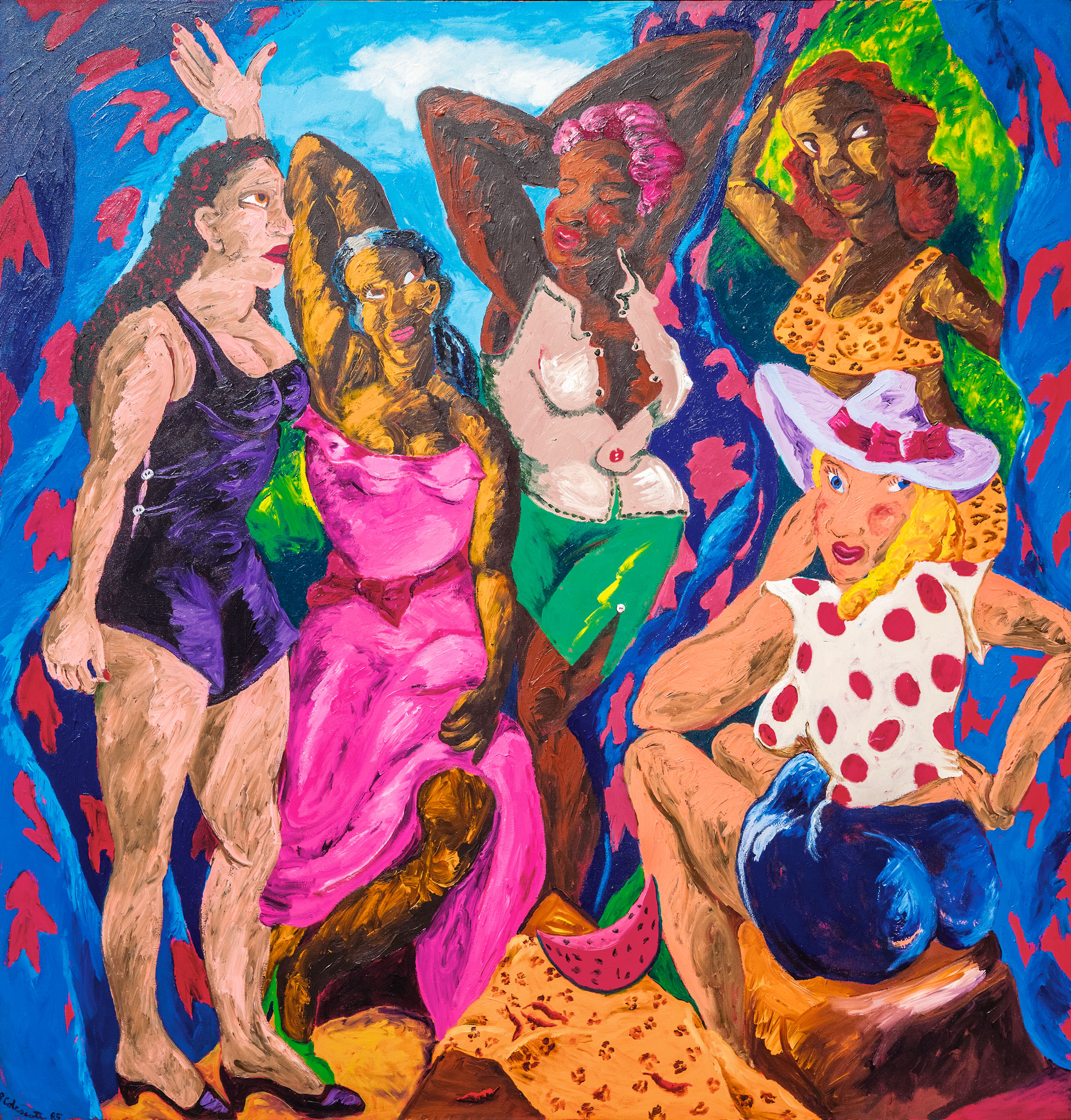
Les Demoiselles d’Alabama: Vestidas, 1985, Robert Colescott
This painting uses Picasso’s appropriation of African art in Les Demoiselles d'Avignon (1907) as an example of Europe’s infatuation with exoticism and ideas of “primitivism.” Colescott takes a critical look at who is painting and who is painted, by re-casting Black subjects as agents and narrators.
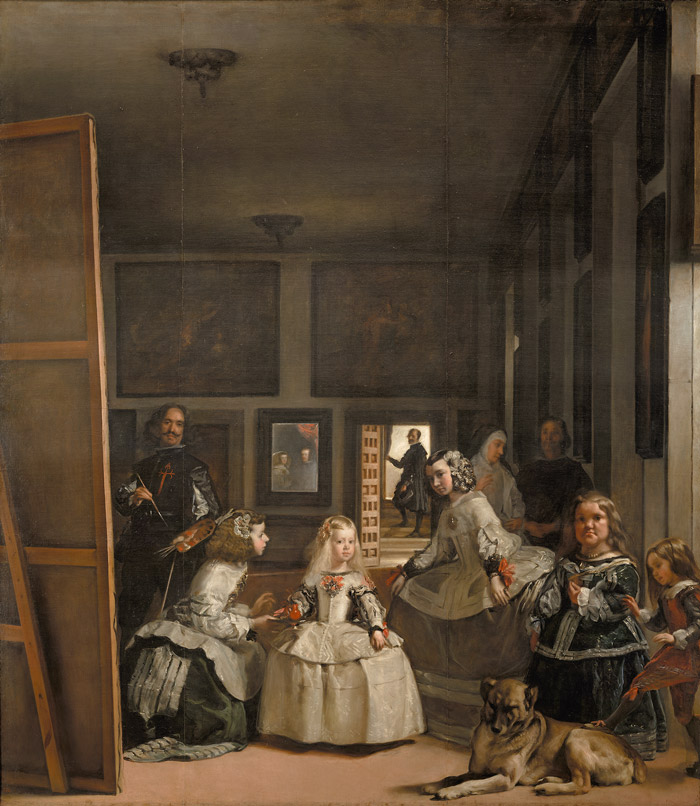
Las Meninas (detail), 1656, Diego Velazquez
This 17th-century painting is a triple portrait whose main subjects—the Spanish King and Queen—appear dimly reflected in a mirror. More clearly represented is the artist at work, half-hidden behind a canvas. Next to him, the young princess becomes the central figure. This painting’s unusual point of view questions the role of the viewer and who is looking at whom. In School of Beauty, School of Culture, Kerry James Marshall inserts the flash of his camera in the mirror behind the woman posing for the picture, to similar effect.
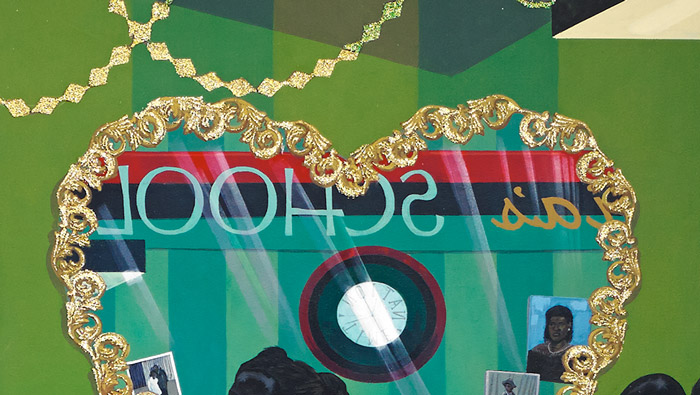
School of Beauty, School of Culture (detail), 2012, Kerry James Marshall
According to the Universal Negro Improvement Association and African Communities League, "the three Pan-African colors on the flag represent: red: the blood that unites all people of Black African ancestry, and shed for liberation; black: black people whose existence as a nation, though not a nation-state, is affirmed by the existence of the flag; and green: the abundant natural wealth of Africa."
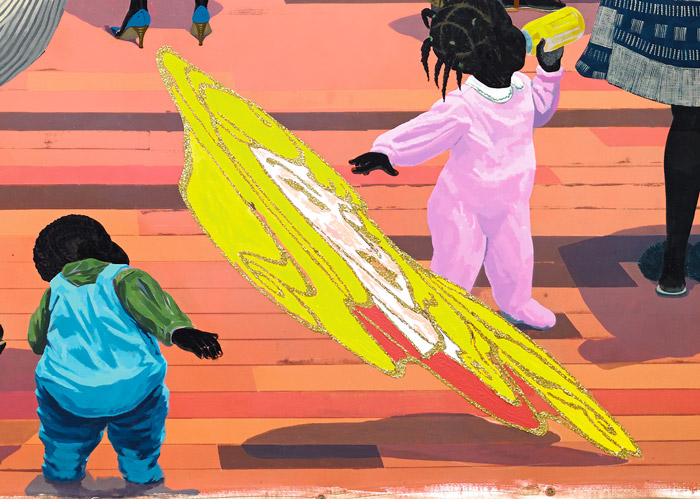
School of Beauty, School of Culture (detail), 2012, Kerry James Marshall
"I am overwhelmed by white figure representations every time I go to a museum. It is almost universally understood that these images are the foundation of art in the western world."
– Kerry James Marshall
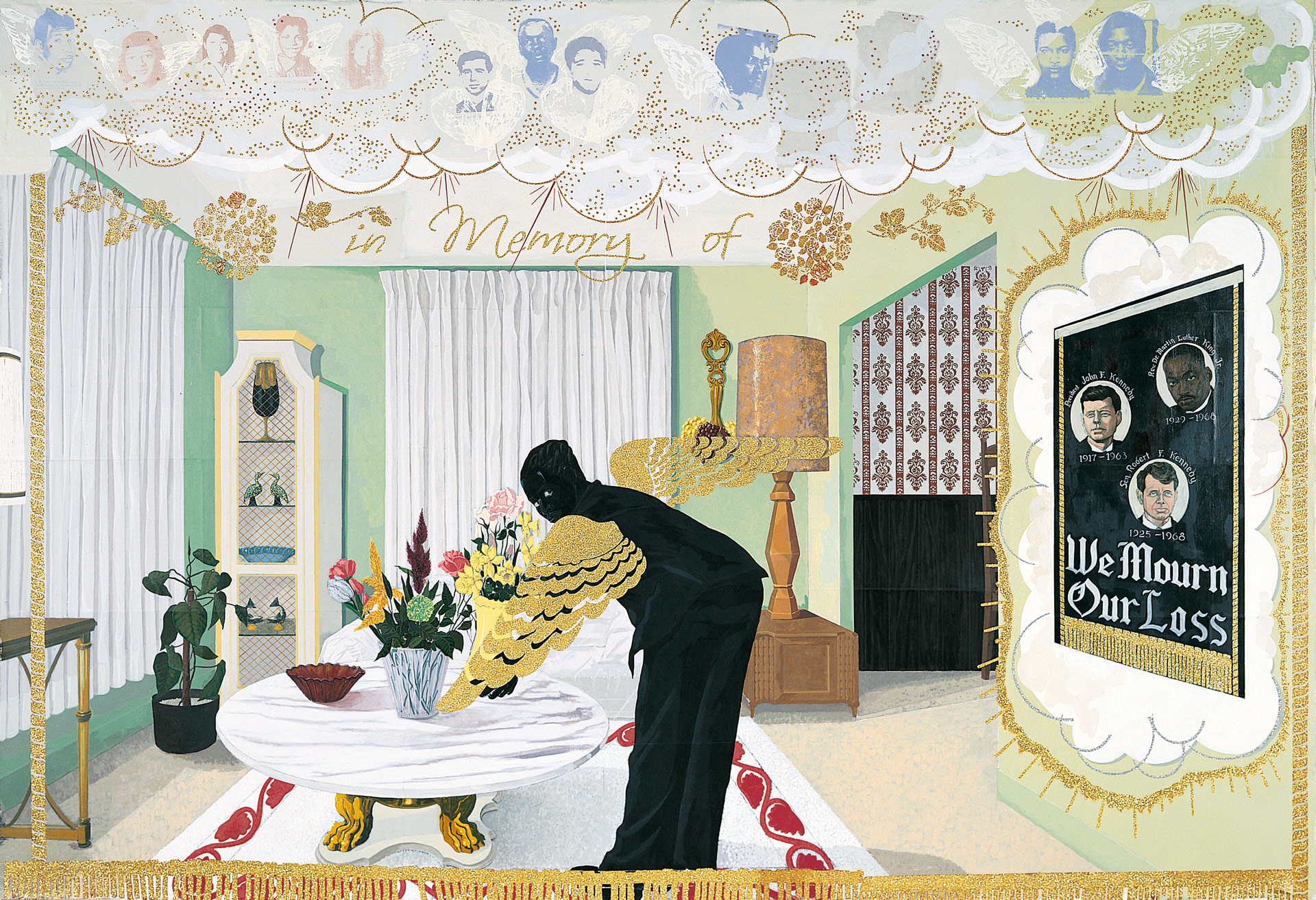
Souvenir I, 1997, Kerry James Marshall
The Souvenir series are history paintings about the the 1960s. They commemorate different aspects of the Civil Rights Movement and Black Liberation Struggle and pay tribute to the many individuals who were murdered or died during this time.

Souvenir I (detail), 1997, Kerry James Marshall
The individuals commemorated in the Souvenir painting series died between 1959–1970. This painting pays tribute to political activists and innocent victims who lost their lives during the Civil Rights Movement. Their faces are adorned with wings like cherubim—or angelic beings—from Baroque painting.
Medgar Evers, NAACP field representative murdered in Mississippi, 1963
Denise McNair, Addie Mae Collins, Carole Robertson, and Cynthia Wesley, the four girls killed in the 16th Street Church bombing in Birmingham, Alabama in 1963
Andrew Goodman, James Chaney, and Michael Schwerner, the three civil-rights workers also killed in Mississippi, 1964
Malcolm X, Black Muslim leader killed by rivals, 1965
Black Panthers, Fred Hampton and Mark Clark, killed by the Chicago police in their sleep, 1969
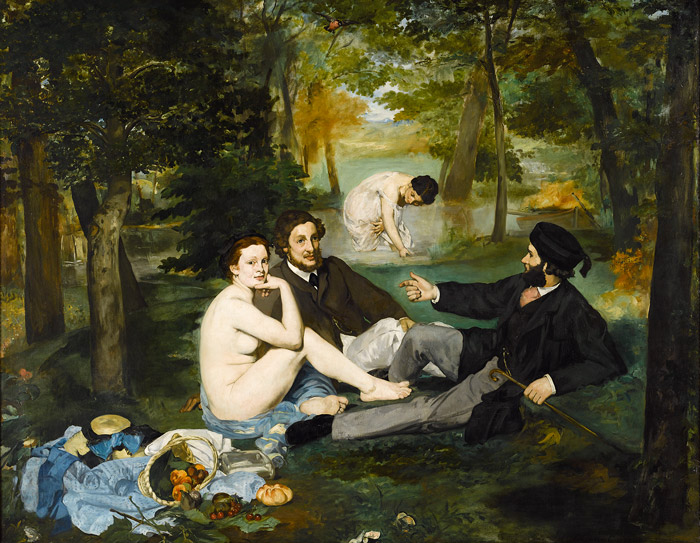
Le déjeuner sur l’herbe (Luncheon on the Grass), 1863, Eduoard Manet
This Manet painting was a watershed moment for modern art. Manet’s male figures are modern Parisians and the nude woman looking at the viewer is a recognizable model rather than a mythological figure or religious character. Without allegory as a subject, this painting was violating tradition. By breaking taboos, Manet started a conversation about painting itself, rather than subject matter. Mickalene Thomas borrows Manet's compositional format for her painting, Le déjeuner sur l’herbe: Les trois femmes noires
Learn more about Le déjeuner sur l’herbe: Les trois femmes noires
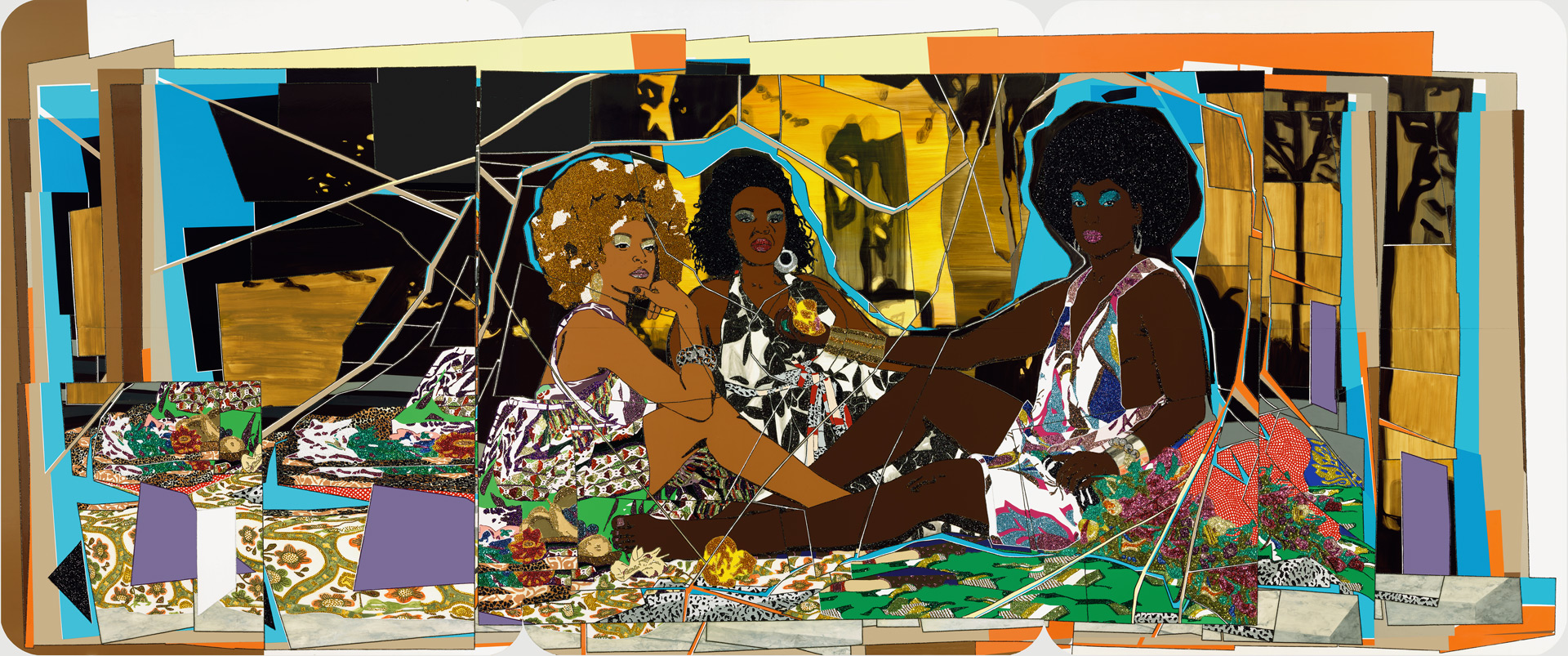
Le déjeuner sur l’herbe: Les trois femmes noires, 2010, Mickalene Thomas
Interior spaces are layered with personal histories in Mickalene Thomas’ work. Her use of textiles, upholstery coverings, rhinestones, and wood paneling evokes the 1970s, the decade she was born. It also questions how decorative choices and taste are culturally inherited according to class. Thomas brings the history of fashion, style, and African art face to face with the history of modern art.
Learn more about Le déjeuner sur l’herbe: Les trois femmes noires
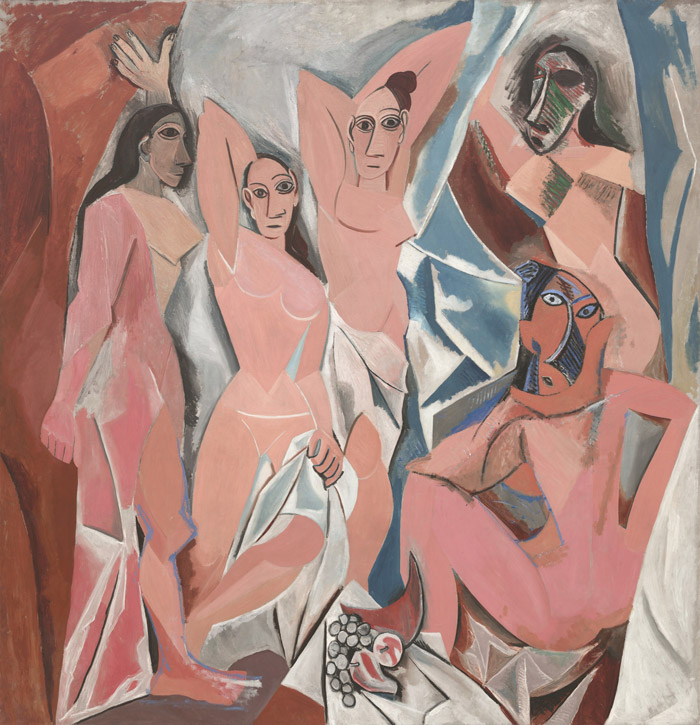
Les Demoiselles d'Avignon, 1907, Pablo Picasso, oil on canvas, Museum of Modern Art, New York, © 2017 Estate of Pablo Picasso / Artists Rights Society (ARS), New York
Picasso’s painting is a milestone in the development of the Cubist style. The faces of the two women to the right were inspired by Iberian sculpture and African masks. Picasso would have come in contact with these artworks because France, at the height of their colonial power, removed many artifacts from their geographical and cultural contexts and displayed them in museums.

Resist, 2017, Mickalene Thomas
This is one of three works created specifically for Figuring History. Mickalene Thomas uses documentary images of the Civil Rights Movement overlaid with bright colors and rhinestones. Thomas cites I Am Not Your Negro, a 2017 movie focused on the writings of James Baldwin, as an inspiration.
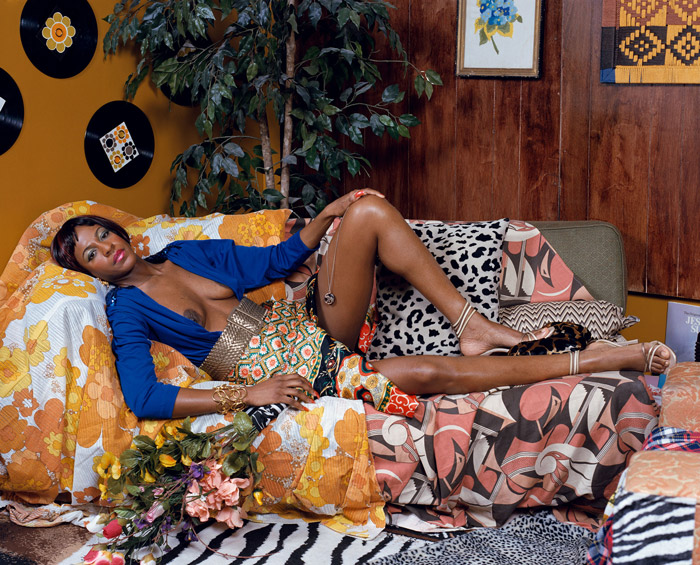
Tamika sur une chaise longue, 2008, Mickalene Thomas, mounted C-print, 24 x 29 1/5 in. © Mickalene Thomas
"I started thinking about domesticity a lot and how the interior space really affects who we are and how it also defines who we are based on the materials we surround ourselves with."
– Mickalene Thomas
Mickalene Thomas begins with constructing installations, that are very much like full stage sets, in her studio where her models are styled and pose. Then Thomas photographs them, creates a collage, and reworks the collage into acrylic on panel compositions to which she adds rhinestones.
Figuring History: Robert Colescott, Kerry James Marshall, Mickalene Thomas brings together three generations of contemporary American artists, whose work challenges a Western painting tradition that underrepresents people of color. The vibrant and monumental paintings by these artists offer bold perspectives on Black culture and representation. Presented together for the first time, the figurative paintings of Colescott, Marshall, and Thomas are shaped by distinctive historic events, unique in style, and united in questioning the narratives of history through Black experience.
The works of these artists together reassess both and history itself through layered references to paintings from the . History painting began in 15th-century Europe and traditionally featured imagery that demonstrated the power and the values of the ruling elite. Missing from these works of art were told on their own terms. In their portrayals, Colescott, Marshall, and Thomas provide testimony centered on Black perspectives in a contemporary context.
Robert Colescott’s paintings speak to the by examining the inherited human condition. Full of symbols, Colescott’s work critiques society as a whole through the use of . The protagonists of his paintings as he works to set the historical record straight.
Unlike Colescott, Kerry James Marshall aims to create artworks that continue but enrich it with a . by the prevalence of white figures and symbols in art history, Marshall’s paintings in the series focus on as reconciliation.
Mickalene Thomas, meanwhile, engages with the history of in her use of which reference . The female figures arranged in challenging poses throughout her work give new agency to the female form, long placed as passive in European art history. For this exhibition she has created three that expand her work in new dynamic directions. In addition, an installation will be in the galleries for visitors to interact with as an example of .
This exhibition is organized by the Seattle Art Museum.
Special exhibitions at SAM are made possible by donors to
![]()
Lead Sponsors

![]()
Lead Foundation Sponsor

Major Sponsors
Baird
National Endowment for the Arts
PHILLIPS
Supporting Sponsors
Margery Friedlander Exhibition Endowment
Max and Helen Gurvich Exhibition Endowment
Josef Vascovitz and Lisa Goodman
Additional Support
Contributors to the SAM Fund


